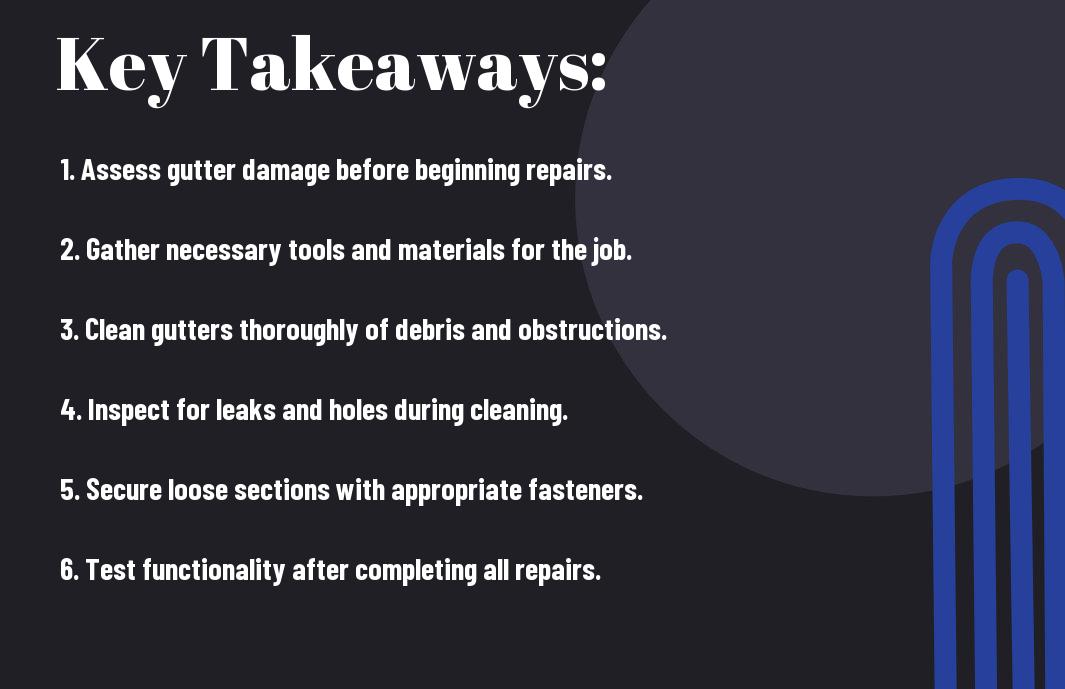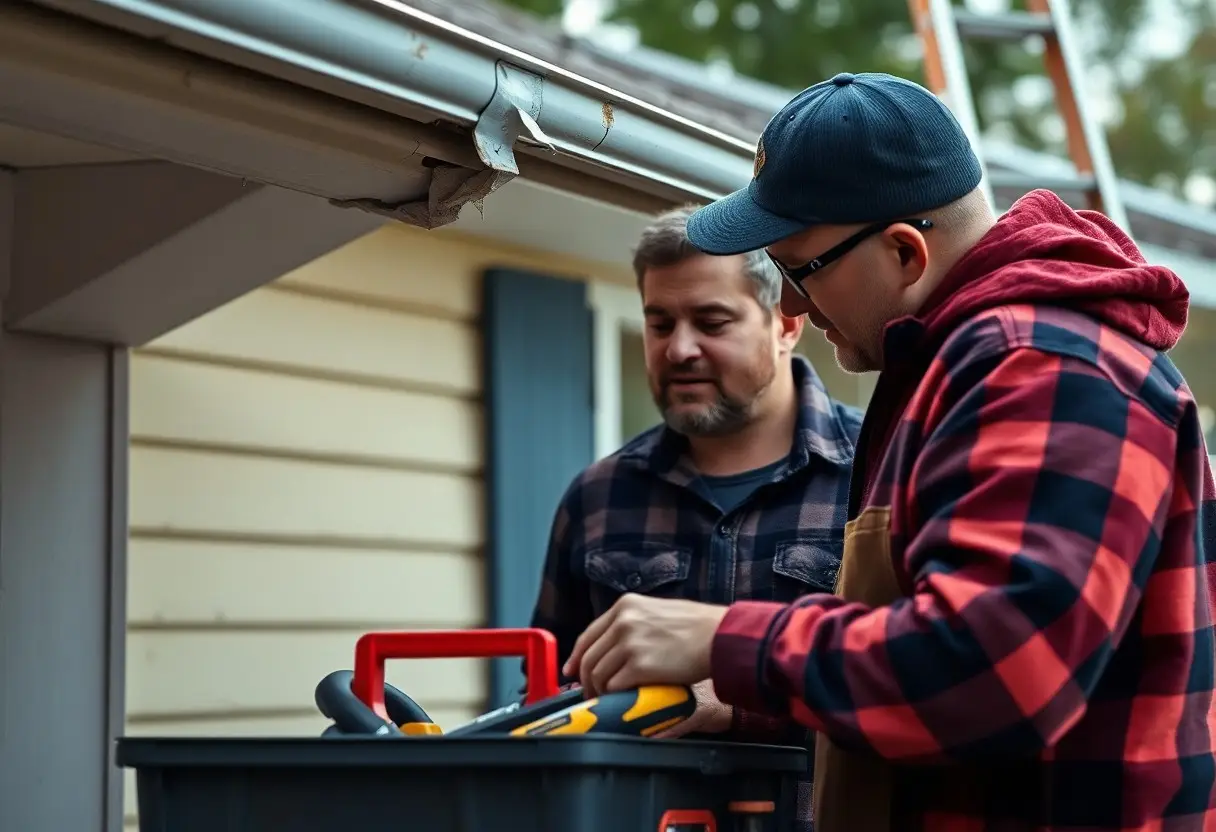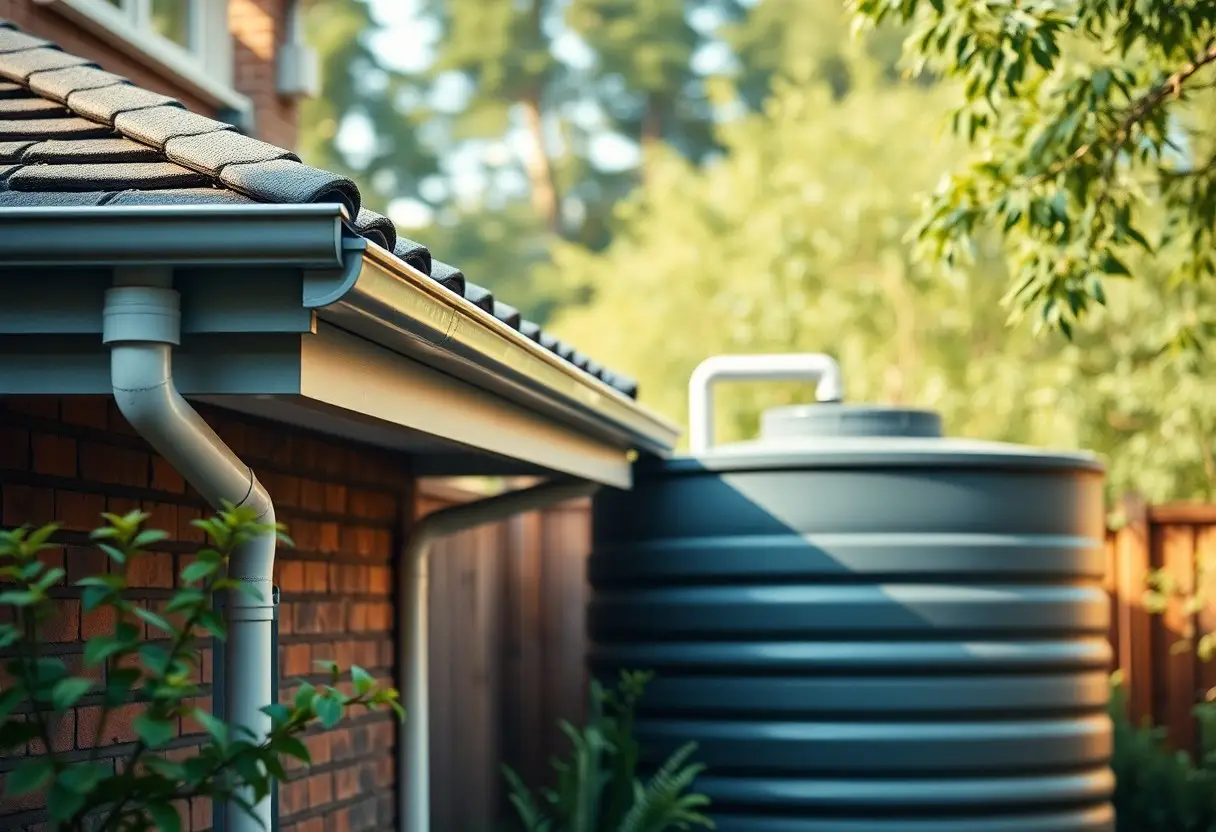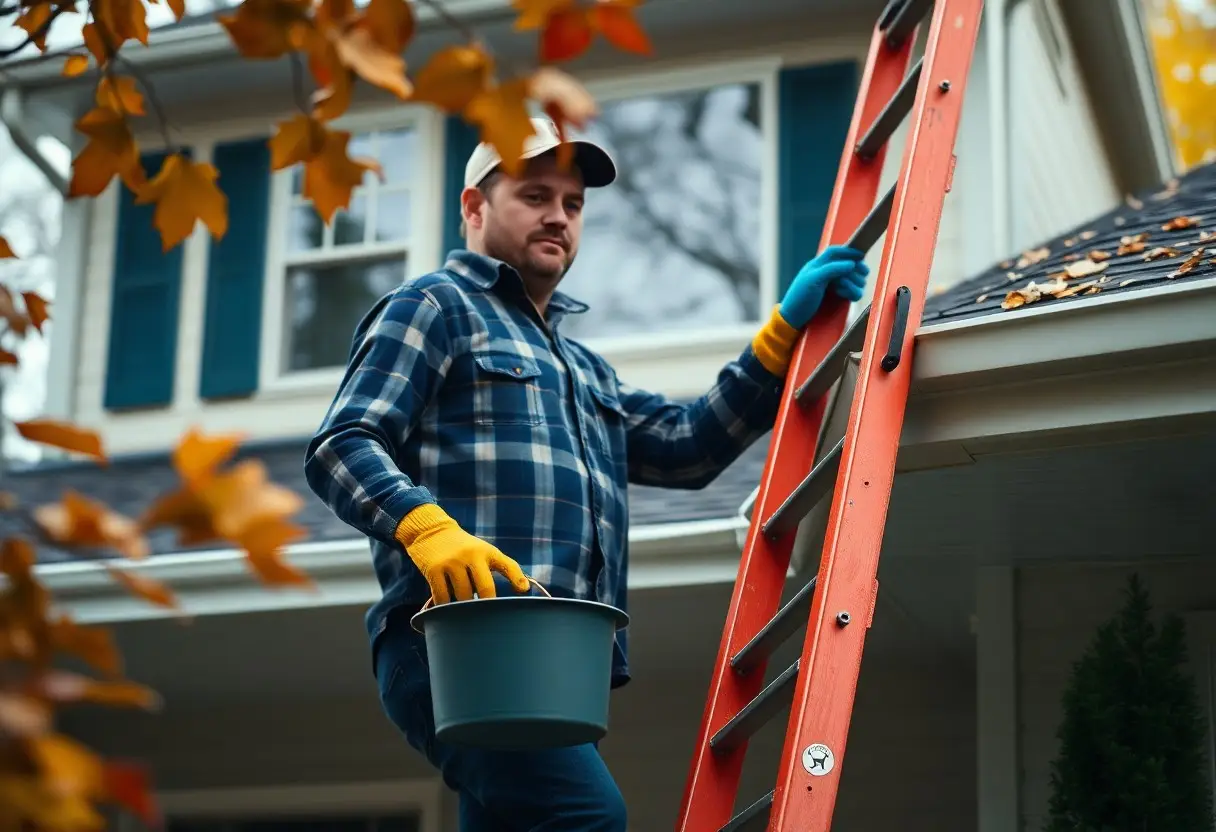Guide your way to a well-maintained home with this comprehensive overview of gutter repair. Your gutters are vital for protecting your property from water damage, and knowing how to address issues can save you money and time. In this post, you will discover seven vital steps that will empower you to take charge of your gutter maintenance. By following these guidelines, you can ensure that your home remains safe and dry, preventing future costly repairs.
Key Takeaways:
- Assess the condition of your gutters regularly to identify any signs of damage or wear that require attention.
- Gather all necessary tools and materials before starting the repair process to ensure a smooth and efficient job.
- Follow safety precautions, including using a sturdy ladder and wearing protective gear, to prevent accidents while repairing gutters.
Understanding Gutters
For homeowners, understanding your gutter system is crucial for maintaining the integrity of your property. Gutters play a vital role in channeling rainwater away from your roof and foundation, helping to prevent water damage and structural issues. Familiarizing yourself with how your gutters work ensures that you can effectively manage their upkeep and tackle any repairs when necessary.
Importance of Gutter Systems
Along with protecting your home from water damage, a well-functioning gutter system prevents soil erosion and molds growth around your foundation. By directing rainwater away from critical areas, gutters serve as your home’s first line of defense against moisture-related problems. Keeping them well maintained can save you from costly repairs in the long run.
Common Gutter Problems
One of the most frequent issues homeowners face is clogged gutters, which can lead to overflowing water and structural damage. Debris such as leaves and dirt can accumulate, blocking drainage and causing backups. Another common problem is sagging or damaged gutters, often resulting from improper installation or excessive weight from debris. It’s crucial to address these issues promptly to maintain the effectiveness of your gutter system.
A proper gutter system is critical for your home’s health. Clogged gutters can lead to water overflowing, which may damage your roof, siding, and foundation. Sagging gutters not only compromise the system’s function but can also pose risks of injury if they detach. Additionally, the presence of pests in stagnant water can exacerbate your home environment further. By being aware of these common gutter problems, you can take proactive measures to ensure water flows freely away from your property.

Tools and Materials Needed
There’s a variety of tools and materials necessary for efficient gutter repair. By assembling the right equipment before starting your project, you can ensure a smooth process and achieve lasting results. In this section, we’ll cover the key tools and materials you will need to tackle your gutter repair with confidence.
Essential Tools for Gutter Repair
Repairing your gutters requires specific tools to get the job done correctly. You will need a sturdy ladder, a trowel or scoop for removing debris, and a caulk gun for applying sealant. Additionally, having safety gloves, a utility knife, and a bucket or tarp for collecting debris will make your task safer and more manageable.
Recommended Materials
Repairing your gutters also entails selecting the appropriate materials to ensure their durability and effectiveness. You’ll need high-quality sealant, flashing tape, and possibly replacement pieces depending on the damage. A roll of gutter mesh can help prevent future clogs, enhancing your gutter’s performance.
But when choosing your materials, focus on durability and weather resistance. Opt for premium-grade sealants that can withstand extreme temperatures and rain. Ensure the flashing tape is waterproof to prevent leaks, and pick materials that are easy to work with. By investing in the right materials, you will not only make your repair process smoother but also significantly extend the lifespan of your gutters.
Step-by-Step Gutter Inspection
Now, conducting a thorough gutter inspection is necessary to ensure their longevity and effectiveness. This process involves careful examination of both the exterior and interior components of your gutters. Follow this structured approach to spot potential issues early.
| Inspection Area | What to Look For |
|---|---|
| Exterior | Check for loose or sagging sections, rust, and blockages. |
| Interior | Look for clogs, debris accumulation, and signs of water overflow. |
Visual Inspection Techniques
Beside using a ladder to physically inspect your gutters, utilize tools such as binoculars or a smartphone camera to capture hard-to-see areas. This method ensures you maintain a safe distance while still being able to assess your gutters effectively.
Identifying Damage
Inspection of your gutters can reveal various types of damage that need addressing. By being observant and thorough, you can identify less noticeable problems that might worsen over time.
Identifying damage in your gutters involves looking for signs such as cracks, leaks, or rust. These issues can lead to serious problems like water damage to your home’s foundation or basement. Also, check for standing water in sagging areas, which can indicate blockages and potentially worsen the condition of your gutters. Addressing these concerns early can help avoid costly repairs in the future, so stay vigilant during your inspection.
Cleaning Your Gutters
Many homeowners underestimate the importance of regularly cleaning their gutters. Clogged gutters can lead to severe issues such as water damage, pest infestations, and structural problems in your home. Taking the time to clear out leaves, debris, and dirt will not only help maintain your property’s integrity but also extend the lifespan of your gutters. Aim to clean your gutters at least twice a year, ideally in the spring and fall, to prevent these issues from arising.
Safe Cleaning Methods
At the outset of your gutter cleaning, ensure your safety by using a sturdy ladder, and consider wearing gloves and goggles to protect yourself from debris. Employ a scoop or trowel to remove clogs, and use a garden hose with a strong spray to flush out any remaining dirt. If the debris is stubbornly lodged, a plumber’s snake can also help clear the way.
Best Practices for Maintenance
Against all odds, regular gutter maintenance can save you from costly repairs. Make it a habit to check for issues like rust, sagging, or cracks in your gutters. Install guards or screens to minimize debris buildup, and ensure downspouts direct water away from your foundation. Additionally, pay close attention to trees nearby; trimming overhanging branches will reduce the amount of debris that can fall into your gutters.
Indeed, establishing a routine for gutter maintenance is vital to thwarting future problems. Conduct thorough inspections after significant storms or seasonal changes to assess any potential damage. By staying proactive, you can avoid severe consequences like flooded basements or weakened structural integrity. Scheduling a professional cleaning service annually can also be a wise choice, providing peace of mind that your gutters are in optimal condition. Make maintenance part of your home care regimen to ensure long-lasting protection.

Repair Techniques
Not all repair techniques are created equal; understanding the right methods will ensure your gutter system functions properly and lasts longer. You should consider the level of damage before proceeding, and always prioritize safety as you tackle your gutter repair needs.
Fixing Leaks and Seams
To effectively fix leaks and seams, start by identifying the source of the problem. Use a sealant or roofing cement to patch small leaks and reinforce seams. Ensure the area is clean and dry before application to guarantee a secure bond. Checking for rust and corrosion will help prevent future leaks.
Replacing Damaged Sections
Among common gutter repairs, replacing damaged sections is often necessary to maintain the integrity of your system. You may need to remove the affected section completely and measure the dimensions of your gutters for a proper fit.
With a damaged section removed, you can easily replace it with a new piece that matches your existing gutter system. This process may involve cutting the new section to size, attaching it securely, and ensuring proper alignment for optimal drainage. Always use high-quality materials to prevent future issues. If you neglect this step, you risk further damage to your home, including potential water intrusion and foundation problems. So, take the time to ensure your repairs are solid, and your gutters will serve you well for years to come.
Preventative Measures
After completing your gutter repair, establishing preventative measures is key to prolonging the life of your system. Regular upkeep and simple protective solutions can significantly minimize the risk of future damage or clogs. Implementing these practices ensures your gutters remain in peak condition, allowing them to function effectively with minimal intervention.
Regular Maintenance Tips
Around your home, regular maintenance is vital to keep gutters functioning optimally. Consider the following tips:
- Cleans gutters bi-annually to remove leaves and debris.
- Inspect for leaks or signs of wear at least twice a year.
- Check downspouts to ensure proper water flow and drainage.
- Trim overhanging branches to prevent blockage.
Thou must stay proactive to prevent issues down the line.
Installing Gutter Guards
Beside regular maintenance, installing gutter guards adds an extra layer of protection to your gutter system. By preventing leaves and debris from entering your gutters, these guards help reduce the frequency of cleanings and minimize the risk of clogs, saving you time and effort.
Understanding the benefits of gutter guards can drastically change your maintenance routine. They not only work tirelessly to keep your gutters clean but also protect against *water damage* and *erosion*. By ensuring that rainwater flows freely, gutter guards diminish the likelihood of costly repairs in the future. Investing in this solution enables you to enjoy a more efficient gutter system while safeguarding your home against the potential dangers of overflow and flooding. Choose wisely to enhance your gutters’ longevity and performance.
How Does the Ultimate Guide to Gutter Repair Compare to Expert Methods for Gutter Repair?
The Ultimate Guide to Gutter Repair offers a comprehensive approach, catering to DIY enthusiasts. While it simplifies the process, expert methods often include advanced techniques tailored for complex issues. To effectively maintain your gutters and prevent costly damage, discover six essential steps for gutter repair that blend professional insights with practical tips.
Summing up
Presently, you have the important knowledge to tackle gutter repair with confidence through the seven steps outlined in this guide. By following this structured approach, you can ensure your gutters function effectively, protecting your home from water damage. Whether you’re a DIY enthusiast or new to home maintenance, applying these techniques will help you maintain your property’s integrity. Trust in your ability to manage these repairs, and you’ll be well on your way to keeping your gutters in top shape.
FAQ
Q: What are the first steps to assess my gutters before starting the repair process?
A: To accurately assess your gutters, begin by inspecting them for any visible damage such as rust, holes, or sagging sections. Check if the downspouts are clogged or damaged, leading to potential overflow issues. Clean out any debris from the gutter channels and perform a water test by pouring water through the system to identify leaks or blockages. Making thorough observations will help you understand what repairs are necessary and prioritize your efforts effectively.
Q: How do I safely perform maintenance on my gutters without risking injury?
A: Safety is paramount when working on gutters. Use a sturdy ladder that extends above the roofline, and make sure it’s placed on stable, level ground. Wearing non-slip shoes will also enhance your footing. It’s best to work with a partner who can hold the ladder steady or assist you if needed. Additionally, consider wearing gloves to protect your hands from sharp edges and debris. If you’re uncomfortable working at heights or if your gutters require extensive repairs, hiring a professional is a sensible choice.
Q: What materials and tools will I need for gutter repair?
A: For basic gutter repair, gather supplies such as gutter sealant, rivets, or screws, depending on the specific repairs needed. You’ll also need tools like a ladder, a screwdriver or drill, a caulking gun, a putty knife for spreading sealant, and a trowel for cleaning out debris. For replacing sections of gutters, you may require new gutter lengths, corners, and downspouts as necessary. Ensuring you have the right materials and tools can make the repair process smoother and more efficient.


